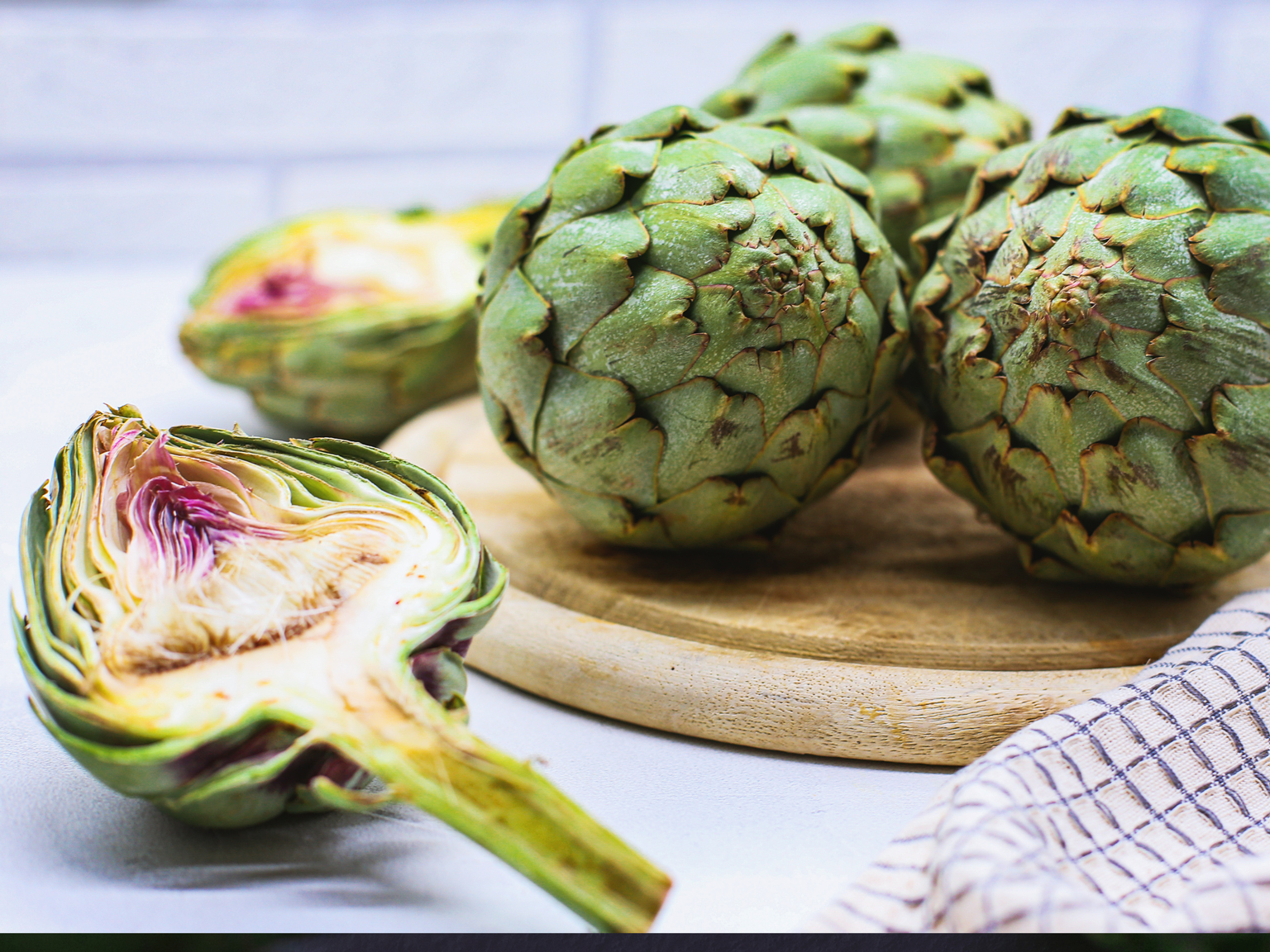Globe or French artichoke is nothing more than a thistle cultivated for culinary needs. What? Yes, these guys with sharp prickles that can cover a stem, leaves or be all over a plant. From the nature perspective, it’s a nice evolutionary adaptation that protects, from a culinary point of view, this is a pain in the butt that hurts. Figuratively speaking. As a group, thistles vary in palatability. Some folks love adding wild plants to the diet. ‘But how to eat a thistle?’, you want to ask. ‘Very carefully’. People gather different types of these plants for their taproots, leaves, young and tender stalks and shoots. But we are here not to promote an uneasy life of wild foragers.
We are here to praise only an artichoke. Its name has been borrowed from Italian articiocco that itself was borrowed from medieval Arabic. As a food item, artichoke was very important for the Mediterranean region. It’s called ‘globular’ because of its looks: round flower-head on an edible base. To prepare it, you need to remove all but this very base that is then boiled, steamed or fried. One of the main concerns is oxidation, that is browning caused by chemical reactions that take place when cells are ruptured like those of an apple. To prevent discolouration artichokes are usually placed into an acidified water prior to cooking.
One of the most remarkable artichoke dishes, belonging to Rome, is a Jewish staple, starting from the 16th century, carciofi alla giudia – fried artichokes. To prepare them, outer leaves are removed, inner leaves and stem are trimmed to get nice looking flower buds. They are then simply lowered into hot 140˚C/˚F oil like you do with chicken wings or mozzarella sticks. Neutral canola oil can be used but extra virgin olive oil is more traditional. Use it if you want to get a stronger flavour that will bring you back to the Mediterranean region. At least in your mind. When artichokes are cool enough to handle, try to open them gently as you would unfold the flower petals. To finish, heat your oil up to 180˚C/350˚F and fry them quickly until crisp and well browned for a minute or two. Take them out and drain on paper towels. Don’t forget to season with salt, pepper and lemon juice. Serve immediately and enjoy, as always.











What do you think?